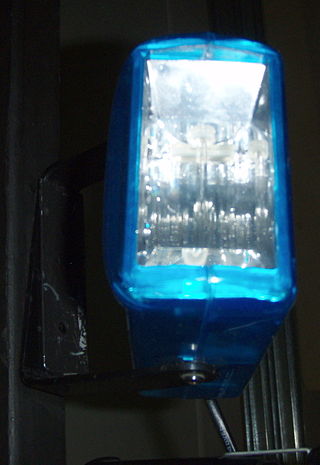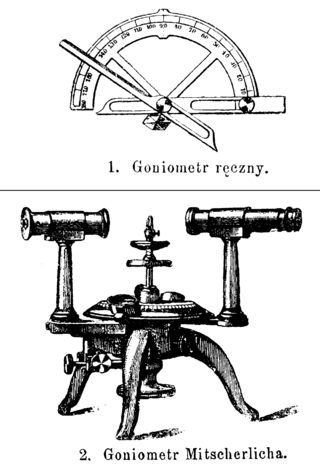Root cause
Light emitted from lighting equipment such as luminaires and lamps may vary in strength as function of time, either intentionally or unintentionally. Intentional light variations are applied amongst others for warning, signalling (e.g. traffic-light signalling, flashing aviation light signals), entertainment (like stage lighting), metrology (strobe light for measurement of rotation speed), navigation (like optical beacons, lighthouses) or for communication (Li-Fi [1] ).
Generally, the light output of lighting equipment may also have unintentional light level modulations due to the lighting equipment itself. The magnitude, shape, periodicity and frequency of the TLM will depend on many factors such as the type of light source, the electrical mains-supply frequency, the driver or ballast technology [2] and type of light regulation technology applied (e.g. pulse-width modulation). These TLM properties may vary over time due to aging effects, component failure or end-of-life behavior. Furthermore external factors such as incompatibility with dimmers or presence of mains-supply voltage fluctuations (power-line flicker) play a role.
TLMs are also known from non-electrical lighting sources like candle light or they may be experienced while driving along a row of trees lit by the sun or by driving through a tunnel lit by luminaires having a certain spacing. [3]
Categories of temporal light effects
Obviously, the intentional TLMs listed under 'Root cause' above result into wanted effects. In many cases TLMs may cause unacceptable annoying effects such as flicker or stroboscopic effect that can directly be perceived by humans. These effects are categorized as temporal light artefacts (TLAs). [4] In additional to mood changes and disturbances, TLM flicker may induce epileptic reactions in susceptible people [3] (photosensitive epilepsy).
Temporal light modulations may also induce disturbance or malfunction of equipment that applies light as input signal. Examples are barcode scanners, cameras and medical test equipment. Interference of photo, film and video cameras may become visible by humans after displaying the image or replaying the recorded video or projection of a film. [5] Typical unwanted artefacts that can be seen on a display or projection screen are flickering of the image and banding (still or rolling) through the image. Unwanted temporal light effects of equipment are categorized as temporal light interference (TLI).
See also
Related Research Articles

In telecommunications, direct-sequence spread spectrum (DSSS) is a spread-spectrum modulation technique primarily used to reduce overall signal interference. The direct-sequence modulation makes the transmitted signal wider in bandwidth than the information bandwidth. After the despreading or removal of the direct-sequence modulation in the receiver, the information bandwidth is restored, while the unintentional and intentional interference is substantially reduced.

Electromagnetic compatibility (EMC) is the ability of electrical equipment and systems to function acceptably in their electromagnetic environment, by limiting the unintentional generation, propagation and reception of electromagnetic energy which may cause unwanted effects such as electromagnetic interference (EMI) or even physical damage to operational equipment. The goal of EMC is the correct operation of different equipment in a common electromagnetic environment. It is also the name given to the associated branch of electrical engineering.

Stage lighting is the craft of lighting as it applies to the production of theater, dance, opera, and other performance arts. Several different types of stage lighting instruments are used in this discipline. In addition to basic lighting, modern stage lighting can also include special effects, such as lasers and fog machines. People who work on stage lighting are commonly referred to as lighting technicians or lighting designers.

A strobe light or stroboscopic lamp, commonly called a strobe, is a device used to produce regular flashes of light. It is one of a number of devices that can be used as a stroboscope. The word originated from the Ancient Greek στρόβος (stróbos), meaning "act of whirling".
The flicker fusion threshold, also known as critical flicker frequency or flicker fusion rate, is the frequency at which a flickering light appears steady to the average human observer. It is a concept studied in vision science, more specifically in the psychophysics of visual perception. A traditional term for "flicker fusion" is "persistence of vision", but this has also been used to describe positive afterimages or motion blur. Although flicker can be detected for many waveforms representing time-variant fluctuations of intensity, it is conventionally, and most easily, studied in terms of sinusoidal modulation of intensity.

Photometry is a branch of optics that deals with the measurement of light in terms of its perceived brightness to the human eye. It is concerned with quantifying the amount of light that is emitted, transmitted, or received by an object or a system.

A stroboscope, also known as a strobe, is an instrument used to make a cyclically moving object appear to be slow-moving, or stationary. It consists of either a rotating disk with slots or holes or a lamp such as a flashtube which produces brief repetitive flashes of light. Usually, the rate of the stroboscope is adjustable to different frequencies. When a rotating or vibrating object is observed with the stroboscope at its vibration frequency, it appears stationary. Thus stroboscopes are also used to measure frequency.

Electromagnetic interference (EMI), also called radio-frequency interference (RFI) when in the radio frequency spectrum, is a disturbance generated by an external source that affects an electrical circuit by electromagnetic induction, electrostatic coupling, or conduction. The disturbance may degrade the performance of the circuit or even stop it from functioning. In the case of a data path, these effects can range from an increase in error rate to a total loss of the data. Both human-made and natural sources generate changing electrical currents and voltages that can cause EMI: ignition systems, cellular network of mobile phones, lightning, solar flares, and auroras. EMI frequently affects AM radios. It can also affect mobile phones, FM radios, and televisions, as well as observations for radio astronomy and atmospheric science.

The stroboscopic effect is a visual phenomenon caused by aliasing that occurs when continuous rotational or other cyclic motion is represented by a series of short or instantaneous samples at a sampling rate close to the period of the motion. It accounts for the "wagon-wheel effect", so-called because in video, spoked wheels sometimes appear to be turning backwards.

The wagon-wheel effect is an optical illusion in which a spoked wheel appears to rotate differently from its true rotation. The wheel can appear to rotate more slowly than the true rotation, it can appear stationary, or it can appear to rotate in the opposite direction from the true rotation.

In telecommunications, visible light communication (VLC) is the use of visible light as a transmission medium. VLC is a subset of optical wireless communications technologies.

An electrical ballast is a device placed in series with a load to limit the amount of current in an electrical circuit.
Stroboscopic may refer to:

In electronics, noise is an unwanted disturbance in an electrical signal.
Radiofrequency MASINT is one of the six major disciplines generally accepted to make up the field of Measurement and Signature Intelligence (MASINT), with due regard that the MASINT subdisciplines may overlap, and MASINT, in turn, is complementary to more traditional intelligence collection and analysis disciplines such as SIGINT and IMINT. MASINT encompasses intelligence gathering activities that bring together disparate elements that do not fit within the definitions of Signals Intelligence (SIGINT), Imagery Intelligence (IMINT), or Human Intelligence (HUMINT).

A Goniophotometer is a device used for measurement of the light emitted from an object at different angles. The use of goniophotometers has been increasing in recent years with the introduction of LED-light sources, which are mostly directed light sources, where the spatial distribution of light is not homogeneous. If a light source is homogeneous in its distribution of light, it is called a Lambertian source. Due to strict regulations, the spatial distribution of light is of high importance to automotive lighting and its design.

LED tube is a type of LED lamp used in fluorescent tube luminaires with G5 and G13 bases to replace traditional fluorescent tubes. As compared to fluorescent tubes, the most important advantages of LED tubes are energy efficiency and long service life. LED tubes are sometimes also referred to as ‘LED fluorescent tubes’.

Temporal light interference (TLI) is an unacceptable degradation of the performance of an equipment or system that has an optical input for its intended functioning and is caused by a temporal light modulation disturbance. A temporal light modulation (TLM) disturbance may be either an intentional or unintentional temporal light modulation (TLM) of lighting equipment such as luminaires or lamps. Examples of equipment that can be interfered are barcode scanners, cameras and test equipment.
Temporal light artefacts (TLAs) are undesired effects in the visual perception of a human observer induced by temporal light modulations. Two well-known examples of such unwanted effects are flicker and stroboscopic effect. Flicker is a directly visible light modulation at relatively low frequencies and small intensity modulation levels. Stroboscopic effect may become visible for a person when a moving object is illuminated by modulated light at somewhat higher frequencies (>80 Hz) and larger intensity variations.
In visual perception, flicker is a human-visible change in luminance of an illuminated surface or light source which can be due to fluctuations of the light source itself, or due to external causes such as due to rapid fluctuations in the voltage of the power supply or incompatibility with an external dimmer.
References
- ↑ Optical communication in general, including visible light communication, signal lamps and alike.
- ↑ See root causes of flicker in Fluorescent lamp lemma.
- 1 2 See flicker problems in the Queensway Tunnel
- ↑ CIE TN 006:2016, Visual Aspects of Time-Modulated Lighting Systems – Definitions and Measurement Models (pdf).
- ↑ Flicker-free video tutorial.